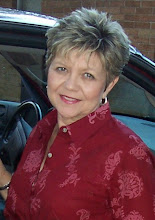www.stainedglasspickup.com
While the Lord sees into Christians’ hearts, an un-churched visitor’s first impression of a church most likely will come from superficial elements: building, greeters, church slogan, location, Website, type of cars in parking lot, “dress code,” signage, leaders/ministers, ethnicity, worship style, and vocabulary. In today’s computer savvy world, church Websites are fast becoming the determining factor of “to visit or not to visit” a congregation.
I recently read Church Marketing 101 by Richard L. Reising and gained the above insights from his book. I like his subtitles better than his title because they better reflect the content of the book: Preparing Your Church For Greater Growth / A Revolutionary Blend of Corporate Marketing Strategy and Biblical Wisdom.
Since the world’s first impression of a body of believers most often comes from outward appearances, Reising, formerly in corporate marketing, points out church-stumbling-blocks that may keep visitors from returning. In one church, members became accustomed to a pink sanctuary with gold bows but male visitors found it overly feminine.
The author demonstrates from scripture how Jesus and Paul managed people’s perceptions, to help guide them to God—Jesus, who prayed outside Lazarus’ tomb for the benefit of the hearers, Paul, who became weak to those who were weak to win them to Christ (John 11:41-42; Acts 17:22-24; 1 Corinthians 9:19-23).
Reising compares modern visitors to the Queen of Sheba, who first heard about Solomon and “his relation to the name of the LORD,” and “she came to test him with hard questions.” When she journeyed to his kingdom, Solomon answered all her questions, but the text says she also saw the order of his kingdom, “the servants in their robes, the cupbearers,” and “the food on his table and the seating of his officials.” The combination of hearing, seeing, and experiencing caused the Queen of Sheba to proclaim “blessed be the LORD your God” (1 Kings 10:4-10).
Reising, not a fan of surveys, watches people at churches, airports, malls, etc, enabling him to give sound advice. He was hired to consult with an affluent church, and in a later session with them, he said they literally spoke in brand names; they discriminated in areas of quality. Instead of hiking boots they said “Timberlands,” instead of sunglasses they said “Oakleys.” One leader kept referring to his drinking water as “my Evian.” Reising explained that a visitor whose basic need was to feed his family would have a difficult time relating to that prosperous congregation. They wouldn’t feel included.
Every church is marketed—from negative to positive, planned or not—visitors and communities receive messages. However, Reising makes this concession: most visitors are willing to overlook an outdated building or inane campaign slogans if when they meet the Christians they see Christ in the people and leaders.
Richard Reising’s first passion is to reach those who need Christ. So, his advice to congregations is straightforward. He encourages churches to better understand people. He urges congregations to prayerfully consider which segment of the masses they are called to reach, and confirms that when God calls God equips. Reising calls congregations to reflect the nature of Christ and to be relevant to the communities they are called to serve.
Friday, July 07, 2006
Subscribe to:
Post Comments (Atom)

Sunday is our new pastor's first service with us. Then next weekend he is bringing in a consultant to talk to the leaders of the church. It should be interesting to see how we are perceived. We are quite a mixed group. Some know what Oakleys are and some would think they had something to do with Annie and a gun.
ReplyDelete